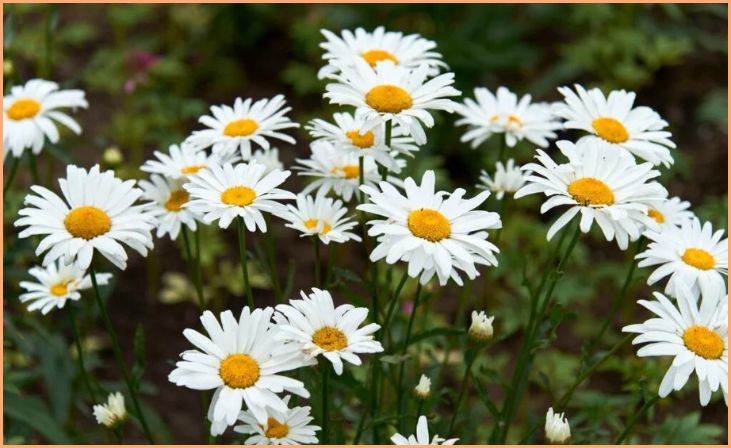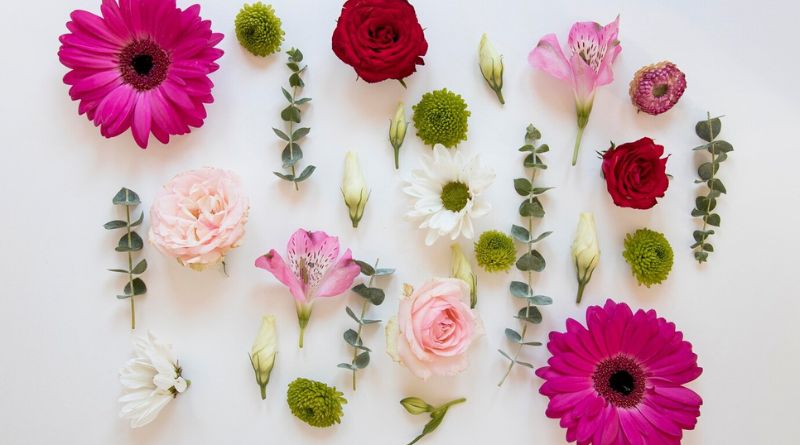6 Most Popular Types of Flowers
For centuries, the allure of flowers has woven itself into the very fabric of human emotion and expression. Today, we embark on a journey into the enchanting realm of the 6 Most Popular Types of Flowers. This comprehensive guide is not merely a catalogue of botanical wonders; rather, it is an exploration into the intricate tapestry of nature’s own masterpieces.
In our quest, we unveil the unique characteristics that distinguish each floral gem, transforming them from mere plants into poetic expressions of beauty. These flowers are not merely petals and stems; they are storytellers, each with its own narrative waiting to be unraveled.
Beyond their aesthetic appeal, these blooms carry profound meanings that have resonated across cultures and generations. From the classic red rose symbolizing love’s passionate flame to the serene white lily embodying purity, each flower is a silent messenger, communicating sentiments that words often fail to capture.
6 Most Popular Types Of Flowers
Roses:
Symbolizing love and beauty, roses have a rich cultural and historical significance. The different colors of roses convey nuanced meanings. Red roses, for example, are the ultimate symbol of love and passion, while white roses represent purity and innocence. Yellow roses signify friendship and joy, and pink roses often express gratitude and admiration. With their delicate fragrance and velvety petals, roses have been a timeless expression of human emotions.
Also Read:- Costco Items With Higher Prices
Tulips:

Tulips are not only visually stunning but also carry a deep symbolism. Originating from Persia and Turkey, tulips became a symbol of perfect love during the Victorian era. Their vibrant colors, including red, yellow, pink, and purple, are associated with different emotions. Tulips are often given as a gesture of affection and are synonymous with the arrival of spring, representing renewal and new beginnings.
Sunflowers:
Sunflowers are known for their distinctive appearance and are associated with adoration and loyalty. Their vibrant yellow petals and large central disks evoke the warmth and energy of the sun. Beyond their aesthetic appeal, sunflowers are also known for a phenomenon called heliotropism, where the flower follows the sun across the sky. This unique characteristic has inspired various cultural interpretations, symbolizing resilience and a positive outlook.
Lilies:
Lilies are a diverse group of flowers with various forms, including Asiatic, Oriental, and Trumpet lilies. They are often associated with virtue and renewal, making them popular choices for weddings and other significant ceremonies. White lilies, in particular, symbolize purity and virtue, while Asiatic lilies come in a range of vibrant colors, representing passion and prosperity. The elegant and graceful appearance of lilies adds a touch of sophistication to any floral arrangement.
Daisies:

Daisies are beloved for their simplicity and charm. These flowers symbolize innocence and purity, making them popular choices for celebrations of new beginnings, such as weddings and the arrival of a newborn. The classic white petals surrounding a yellow center create a timeless and joyful appearance. Daisies are often associated with feelings of happiness, making them a delightful addition to bouquets and gardens alike.
Orchids:
Known for their exotic beauty, orchids are a symbol of love, beauty, and strength. With a vast variety of species and colors, orchids are prized for their unique and intricate shapes. In many cultures, orchids are associated with luxury and refinement. They are often used in elegant floral arrangements and convey a sense of rare and delicate beauty. Orchids’ versatility in color and form allows them to be a symbol of love and appreciation in various contexts.
Gardening Tips For Different Types Of Flowers
Soil Preparation:
Ensure well-draining soil for most flowers. Roses, for instance, prefer slightly acidic soil. Amend the soil with organic matter like compost to improve its structure and fertility.
Sunlight Requirements:
Understand the sunlight needs of each flower. Roses and sunflowers thrive in full sun, while lilies and orchids may prefer partial shade. Consider planting them in locations that meet their specific sunlight requirements.
Watering Guidelines:
Be mindful of watering. While roses and lilies generally prefer consistently moist soil, sunflowers and daisies are more tolerant of drier conditions. Avoid overwatering, as it can lead to root rot.
Fertilization:

Feed your flowers with a balanced fertilizer during the growing season. Follow recommended dosage guidelines, as over-fertilizing can be detrimental. Some flowers may benefit from specialized fertilizers, so be sure to research specific needs.
Also Read:- Dollar Tree Items To Stock Up ASAP
Pruning Techniques:
Learn the proper pruning techniques for each type of flower. Roses, for example, benefit from regular deadheading to encourage continuous blooming. Lilies may require the removal of spent flowers to divert energy to new growth.
Conclusion
Embarking on this exploration of the 6 Most Popular Types of Flowers, we’ve ventured into the fascinating realm of rich symbolism, vibrant hues, and essential care practices for these botanical wonders. Whether you boast the seasoned hands of a skilled gardener or find yourself captivated by the allure of blossoms as a dedicated flower enthusiast, this comprehensive guide endeavors to heighten your understanding and appreciation for the extraordinary beauty that graces our surroundings.
As we traversed the varied landscapes of roses, we uncovered the profound meanings in each color, transforming these flowers into eloquent messengers of human emotions. From the fiery passion embodied by red roses to the purity symbolized by white ones, each hue contributes to a tapestry of sentiments woven into the fabric of our cultural expressions of love and beauty.
FAQs
Yes, there are black roses. They symbolize mystery and farewell. However, they are not naturally black; they are usually dark red or purple.
Orchids should be watered once a week, allowing the soil to dry slightly between waterings. Ensure proper drainage to prevent root rot.




